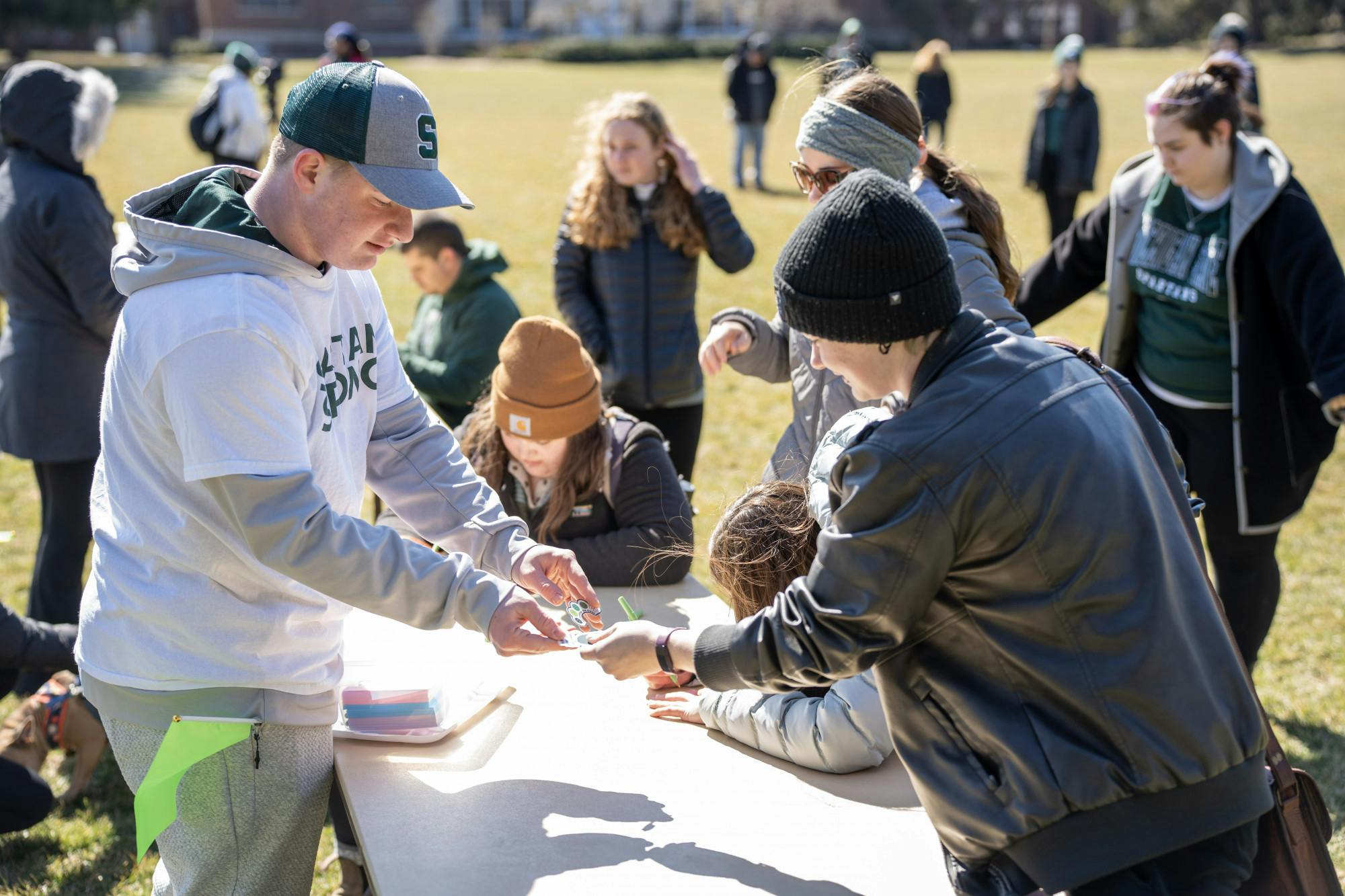Psychology sophomores Hannah Greenspan and Kirin Krafthefer are creating an exhibit in collaboration with the MSU Museum to memorialize student experiences from the Feb. 13 mass shooting.
The pair held an event Sunday to gather stories for the exhibit.
The project was inspired by Krafthefer’s blog, Spartan Stronger, which she created as a space for students to share testimonies about Feb. 13. For Krafthefer and Greenspan, the goal of the event and the larger project was to give students an opportunity to share their stories and heal together.
“Regardless of what you’re feeling or what you experienced, indirectly or directly,” Krathefer said. “Your experiences and feelings are valid. Your story will not be the same as the person standing to the left or the right, but is equally as important.”
The event was held at Demonstration Field and included CAPS volunteers available to help students in need. Volunteers handed out index cards for students to write down their experiences, which will later be given to the MSU Museum and saved in the MSU Archives.
Digital storytelling freshman Evie Ansari attended the event alone, something she said she felt anxious about doing but thought was important for herself and others. Ansari said the opportunity to have your story remembered is an amazing thing.
“I really liked writing down my story,” Ansari said. “It was very therapeutic for me to write it out. I like how (the event) is very quiet and you have time to sit with your thoughts.”
CAPS associate director and director of psychiatry Swapna Hingwe volunteered at the event to support students. The process of writing down a traumatic experience can help organize difficult to process memories, Hingwe said.
"Sometimes, the benefit of writing is that it can help us settle our minds and bring some coherence to our thoughts," Hingwe said. "When we talk about painful experiences with a supportive, safe human, we can learn that trauma can be dealt with, and difficult emotions can be tolerated. Both writing and talking can help us organize our memories. It's also important to consider the timing. It may take time before you're at a point where you can put trauma into words. So, it's important to be patient with yourself and recognize that you get to decide when, where, how and to whom you tell your story. All of this is part of healing."
Greenspan and Krafthefer wanted to highlight the wide variety of student experiences from Feb. 13. For ASMSU Council of Students with Disabilities representative Madeleine Tocco, it was important to highlight the experiences of disabled students.
“To say run, hide, fight, especially for disabled people, that is disingenuous,” Tocco said. “What are you thinking saying that to somebody who might not even be able to run, hide or fight? In what world does that make sense?”
In addition to recording her own story, Tocco wanted to attend the event to provide support for other students.
“I honestly hope students are able to reflect and heal, even though I know that's a long process and it’s hard,” Tocco said. “I’m rooting for every single student and that’s why I’m here.”
Greenspan said knowing that the event helped even one student process their trauma was extremely validating.
“I sat down and talked to some people,” Greenspan said. “Some people here are my friends, some people here I don’t know, total strangers, so being able to talk to them and having them say that this is something that would help them … it just validates that what we’re doing is a good thing.”
Students who didn’t attend the event, or didn’t feel comfortable sharing their story at the time, can still participate in the exhibit. Greenspan and Krafthefer said on-campus dropbox locations will be designated so that other students can include their story at a later time.
“Spartans may enter this exhibit in their process of healing to find that they are not alone,” Greenspan said. “Non-Spartans may enter this exhibit to see firsthand what it looks like for a community of 40,000 individuals to mourn, freeze, thaw and overcome.”
Support student media!
Please consider donating to The State News and help fund the future of journalism.
Discussion
Share and discuss “Students create MSU Museum exhibit, memorialize Feb. 13 experiences” on social media.




